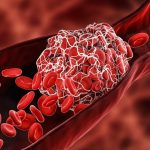Treating Hemochromatosis with Phlebotomies
Treating hemochromatosis with phlebotomies is a safe and effective way to reduce excess iron in the body.
Hemochromatosis is a condition that causes one’s body to absorb and store too much iron from the food they consume. The extra iron builds up in the liver, heart and pancreas and can cause severe damage. Also known as “iron overload,” the disease can lead to various health problems such as heart disease, diabetes and liver disease. Fortunately, hemochromatosis can be treated with a simple blood removal procedure known as phlebotomy.
If you’ve been diagnosed with hemochromatosis, it is important to understand the condition and what treatments are available. This article will discuss hemochromatosis symptoms, diagnosis and treatment options.
What is hemochromatosis?
Hemochromatosis is a common genetic disorder. Healthy people generally absorb around 10 percent of the iron contained in the food they consume. Individuals with hemochromatosis absorb more iron than the body needs. Since the body does not have a natural way to get rid of the excess iron, it builds up in the organs and can cause serious damage. This can lead to arthritis, heart abnormalities, impotence, damage to the adrenal gland, pituitary damage, early menopause and more.
Who is affected by hemochromatosis?
Nearly 1 million people are affected by hemochromatosis. Hereditary hemochromatosis predominantly affects Caucasians of Northern European descent and is found five times more often in men than women. The signs and symptoms of hemochromatosis most often appear in midlife.
Causes and risk factors of hemochromatosis
Genetic or hereditary hemochromatosis is caused by a defect in a gene that regulates the amount of iron absorbed from the food you consume. If you inherited the defective gene from both parents, you might develop hemochromatosis. If you inherited the gene from only one parent, you are a carrier for the disease but are unlikely to develop it.
Two forms of the disease, juvenile hemochromatosis and neonatal hemochromatosis, are not caused by a gene defect. Both forms lead to iron overload and liver and heart disease. While hemochromatosis is mainly a genetic disorder, it can also occur due to other blood disorders, long-term alcohol use and other health conditions.
Symptoms of hemochromatosis
Unfortunately, hemochromatosis can be difficult to diagnose. Even in advanced cases, many people have no symptoms. The most common complaints of people with hemochromatosis are joint pain and fatigue. Additional hemochromatosis symptoms may include weight loss, memory fog, abdominal pain, loss of sex drive, generalized darkening of skin color, loss of body hair and heart problems. Symptoms usually occur in men between the ages of 30 and 50 and in women over age 50.
Treating hemochromatosis with phlebotomies
The goal of hemochromatosis treatment is to remove excess iron from your body. Phlebotomy is a simple, inexpensive, safe procedure that removes blood to reduce life-threatening iron levels.
A phlebotomy for hemochromatosis is similar to donating blood and is typically done at a doctor’s office or a hospital. A phlebotomy generally removes about 470 milliliters of blood and reduces the amount of iron in the body by about 250 milligrams.
Treatments continue until you reach a normal level of iron in your bloodstream. Your doctor will determine how often you should have phlebotomy based on your age and the severity of your hemochromatosis.
Once your iron levels return to normal, you will begin maintenance therapy. This involves giving a pint of blood every two to four months for life. You should undergo an annual blood test to help determine how often blood should be removed.
How to reduce complications of a phlebotomy
While the risks associated with phlebotomies are low, it is important to exercise regularly and maintain a healthy diet when undergoing treatment. Your doctor may also advise avoiding alcohol, iron supplements, vitamin C supplements, raw fish, shellfish and red meat.
Board-certified hematologist in Raleigh
If you experience any of the signs and symptoms of hereditary hemochromatosis, it is important to see a doctor as soon as possible. A board-certified hematologist is the most qualified doctor to perform blood tests to diagnose the disease and recommend treatment options.
Treating hemochromatosis with phlebotomies will help alleviate symptoms of tiredness, skin darkening and joint pain and can help prevent liver disease, heart disease and diabetes. Schedule an appointment with our hematologist who specializes in treating hemochromatosis and other blood disorders.





